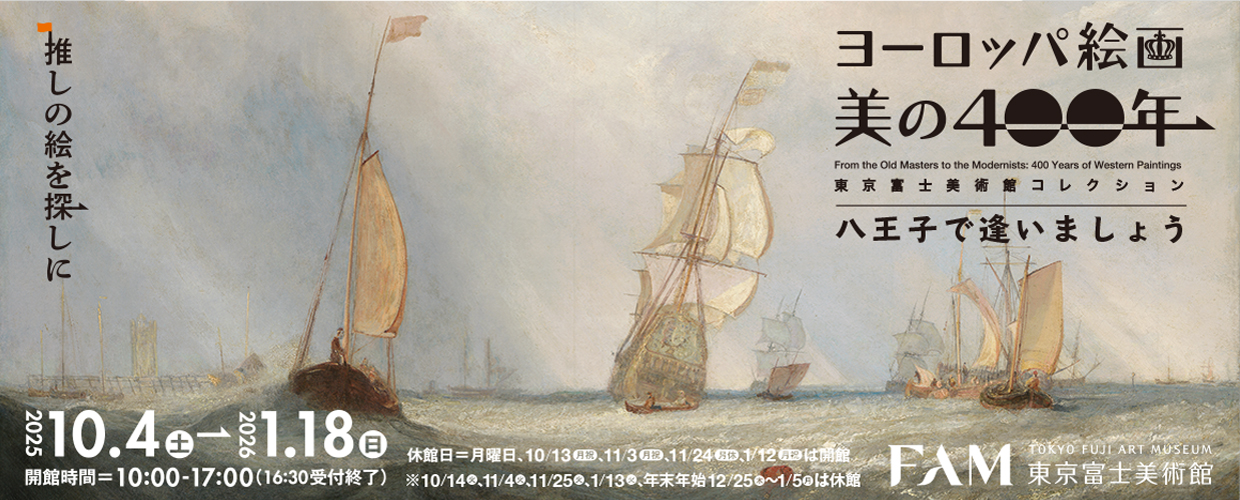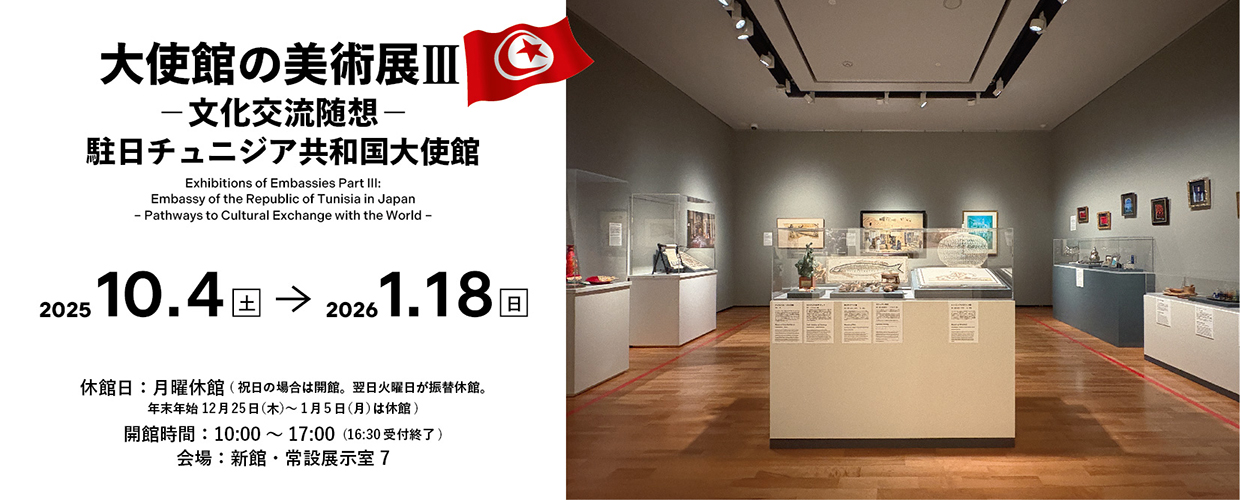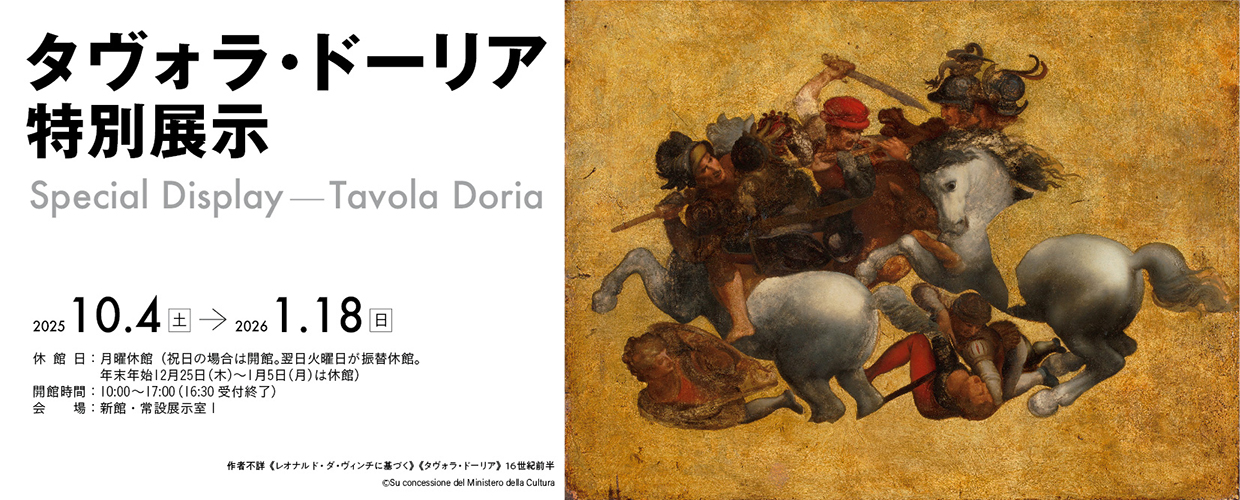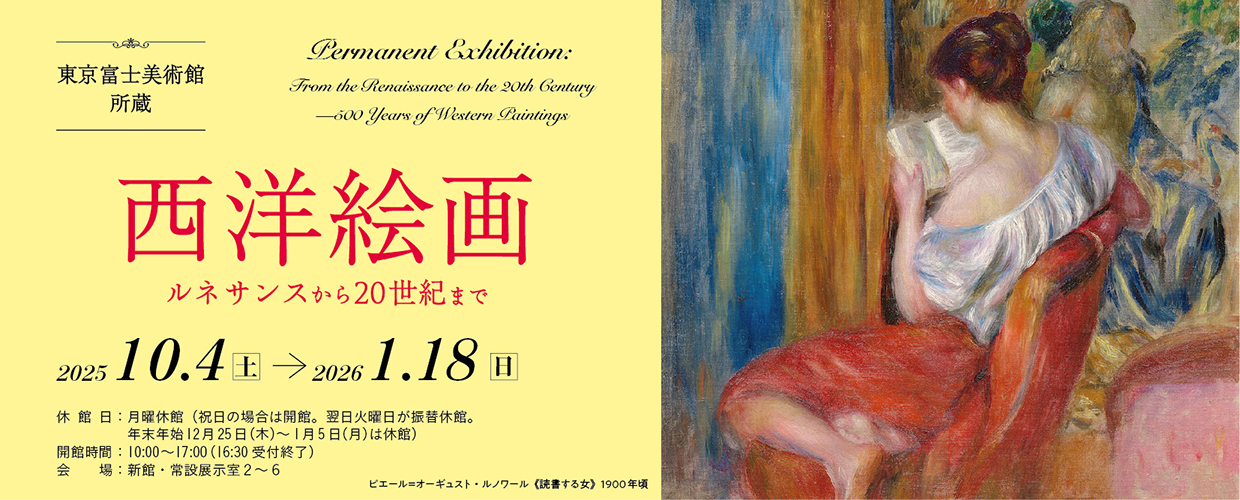

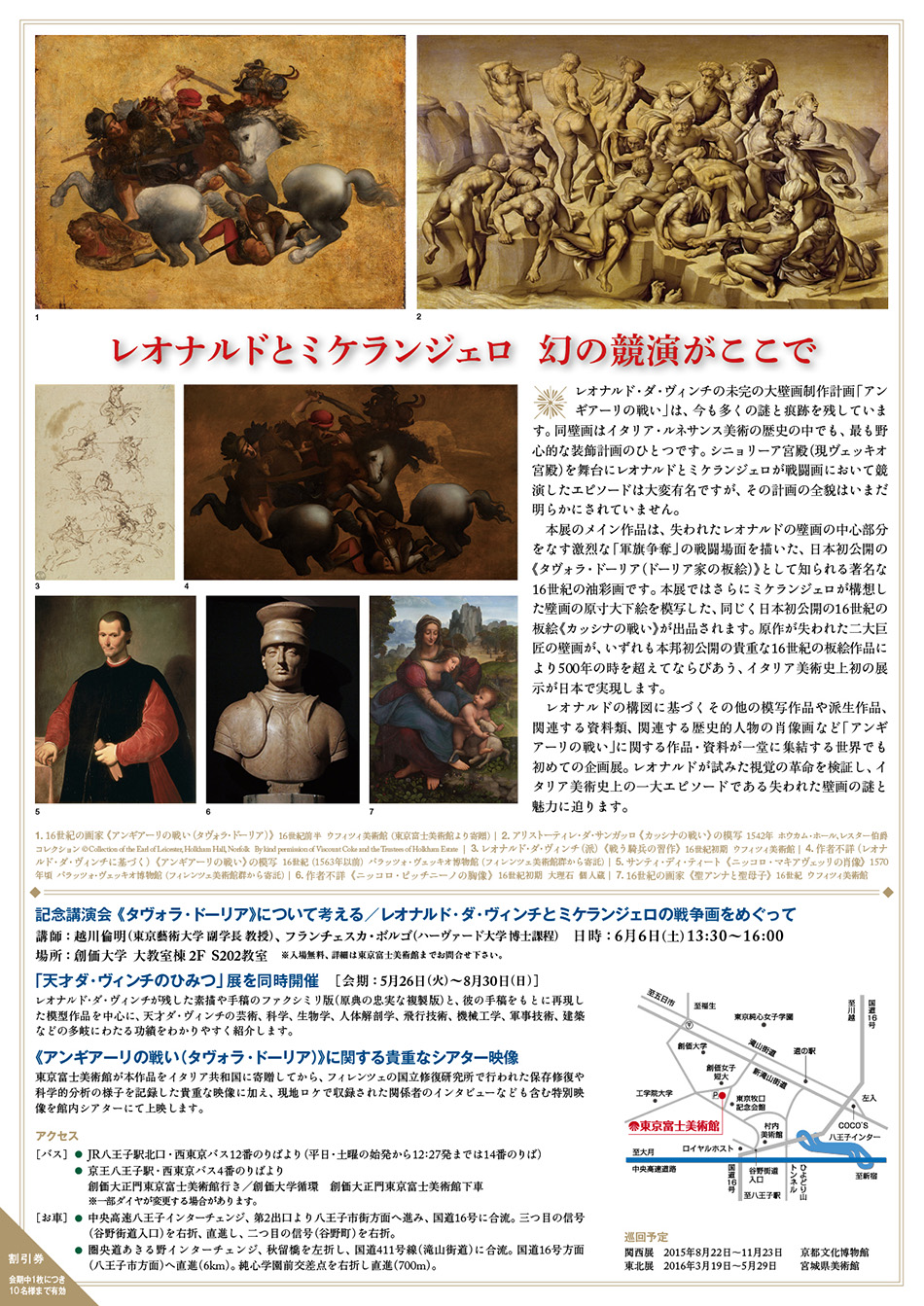



Leonardo da Vinci and The Battle of Anghiari: The Mystery of Tavola Doria
Exhibition Period Tuesday, May 26 - Sunday, August 9, 2015
Closed : Mondays (except on holidays, then closed on Tuesday)
Open : 10 a.m.-5 p.m. (Reception closes at 4:30 p.m.)
Venue : Special Exhibition Galleries 1-4 in the Main Building of Tokyo Fuji Art Museum
Host : Tokyo Fuji Art Museum; The Yomiuri Shimbun
With the High Patronage of the President of the Italian Republic; Patronized by : Ministry of Foreign Affairs of Japan; Japanese Agency for Cultural Affairs; Italian Ministry of Cultural Heritage and Activities and Tourism; Embassy of Italy in Japan; Italian Cultural Institute of Tokyo; City of Florence; Hachioji City; Hachioji City Board of Education; Special Sponsorship by: SECOM Co., Ltd.; Nippon Paper Industries Co., Ltd.; Sponsored by: Obayashi Corporation; Kandenko Co., Ltd.; Dai Nippon Printing Co., Ltd.; Mizuho Trust & Banking Co., Ltd.; In Cooperation with: NHK Educational Corporation; Alitalia-Società Aerea Italiana S.p.A.; Japan Airlines; ARTERÌA; Yamato Logistics Co., Ltd.; Planning by: Tokyo Fuji Art Museum
OVERVIEW
To this day, The Battle of Anghiari by Leonardo da Vinci remains as shrouded in enigma as it is with intrigue. One of the largest mural projects he ever undertook, it is ranked among the most ambitious decorative works in the history of Italian Renaissance art. What is widely known is that da Vinci and Michelangelo had been concurrently commissioned in 1504, the former to depict a battle scene from the famous military clash that took place in Tuscany in 1440, the latter to paint another battle in Cascina that occurred in 1364. The two works were to adorn opposite walls of the Salone dei Cinquecento (Hall of the Five Hundred) in the Palazzo Vecchio, Florence. Neither mural, however, was ever completed—and only tantalizing hints of what may have been are left for us to marvel at, puzzle over and debate. For instance, the only clue that still exists of what the Battle of Cascina that Michelangelo had envisaged for the Hall is a full-scale sketch of his original composition. And while da Vinci’s work had progressed beyond the sketching phase, it was still only partially finished and was eventually painted over in the 1560s by Giorgio Vasari. Even so, The Battle of Anghiari—which has been hailed for its powerful portrayal of the fury and grace of horseback men at war—continued to exert immense influence on generations of artists to come. Our exhibition is comprised of two primary features, the first being the Tavola Doria, a renowned oil painting dating back to the 16th century believed to represent the central portion of da Vinci’s original mural. The second is a 16th-century wood-panel reproduction of Michelangelo’s the Battle of Cascina. Neither of these works has ever been exhibited in Japan. Nor have they ever been put on display as they are in this exhibition—woodpanel reproductions set side by side—over the past five centuries of Italian art history. In presenting this exhibition, our Museum has meticulously compiled and examined da Vinci’s preparatory studies and sketches, reproductions and derivative works based on his original composition, as well as numerous documents and portraits of historical figures relevant to Tavola Doria and The Battle of Anghiari. The exhibition, “Leonardo da Vinci and The Battle of Anghiari: The Mystery of Tavola Doria,” is therefore a unique examination of the revolution in visual perception that da Vinci spawned, one which seeks to delve into the mystery and allure of these artworks, the fate of which remains unsolved to this day.
FEATURED
There are no featured articles.
EVENTS
There are no events scheduled. Please check past events by clicking the [View list] button.
UPCOMING EXHIBITIONS
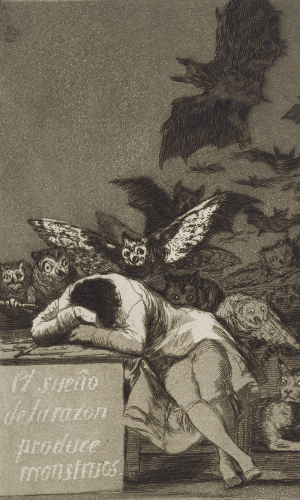 Exhibition of Our Collection
Exhibition of Our Collection The Four Major Print Series of the Spanish Master, Goya
 Other Exhibition
Other Exhibition Exhibitions of Embassies Part IV: Pathways to Cultural Exchange with the World
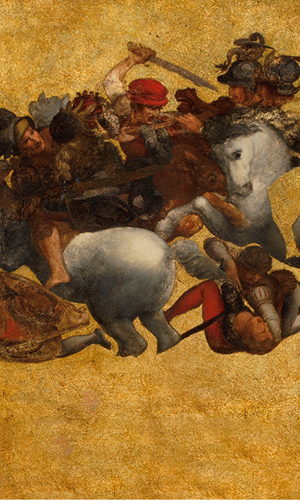 Permanent Exhibition
Permanent Exhibition Special Display—Tavola Doria
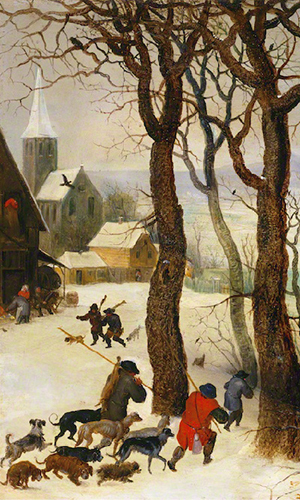 Permanent Exhibition
Permanent Exhibition Permanent Exhibition: From the Renaissance to the 20th Century – 500 Years of Western Paintings
 Special Exhibition
Special Exhibition Commemorating the Donation of the Kanbe Collection The Reviving Spirit of Ukiyo-e: From Meiji Era Kaika-e to Shin-hanga
 Special Exhibition
Special Exhibition This is SUEKI-Ancient Vessels,Timeless Forms-
 Special Exhibition
Special Exhibition Renoir (tentative title)
